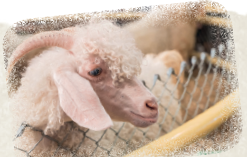SUPER SMART ANIMALS
We like to think that humans are special – we use tools, invent things, fall in love, speak languages, laugh, cry, and do all things that we used to believe animals didn’t do. However, if you read about these studies of animal behavior, you will find they are much smarter than you imagine!
A If you had a parrot, you could teach him to repeat things. But would he understand the words? Well, Martin, an African grey parrot, certainly did. He learned about 150 words, accurately counting and identifying items by their colour, material, shape and size. His final words to his owner were ‘You be good. See you tomorrow. I love you.’ Scientists have also taught apes and dolphins aspects of human language. Apes communicate with symbols; a bonobo ape called Kanzi could understand several thousand words using a keyboard of 400 symbols. But perhaps dolphins get top marks for communication skills. In Hawaii, Akeakamai and Phoenix, two captive dolphins, could understand thousands of original sentences, using prepositions, and concepts such as left and right.
B If you watched the video clip of the depressed goat, Mr G, being reunited with Jellybean the donkey, you would see that animals can really miss their friends. In fact, animals or birds living in complex social groups also appear to mourn for the dead. When Western scrub jays find a dead jay, they gather round the bird’s corpse for days, holding a noisy funeral. When an elephant dies, the rest of the herd often guards the body, becoming agitated and touching the corpse. Chimp mothers can carry their dead offspring for weeks, protecting them. And dolphins have been observed in great distress, grieving, desperately trying to reanimate their dead calves.
C Santino, a chimpanzee in a Swedish zoo, used to throw rocks at the public who came to watch him. But then he did something that proves primates can plan ahead, just like humans – he began throwing hailstorms of stones. The surprised keepers didn’t know where Santino had got them from, so they secretly watched him. Before the zoo opened, he would calmly collect rocks from the moat and get them ready in small piles. Then, if people stood too close, he would suddenly throw the hidden rocks at them.
D There are facial recognition areas in the brains of both animals and humans. If you show dogs photos of faces, they gaze at the images of familiar humans and dogs for much longer than at those of strangers, proving they recognise faces. Parrots and pigeons also remember the faces and voices of human beings and are even able to identify a familiar human face from a photo. In a study of sheep, they proved to be able to remember at least 50 different sheep faces, even after two years. Whoever said sheep are stupid?

